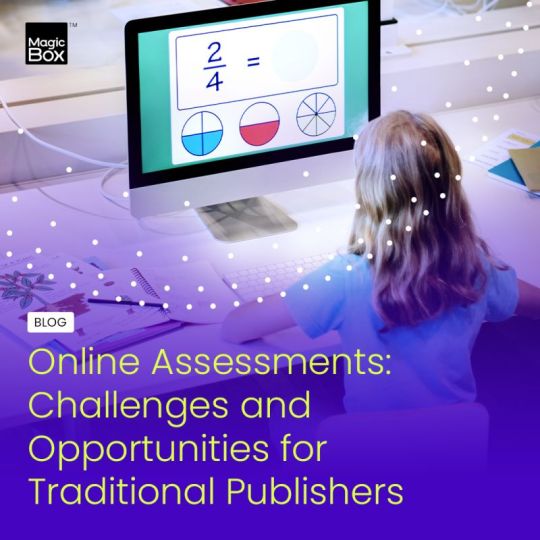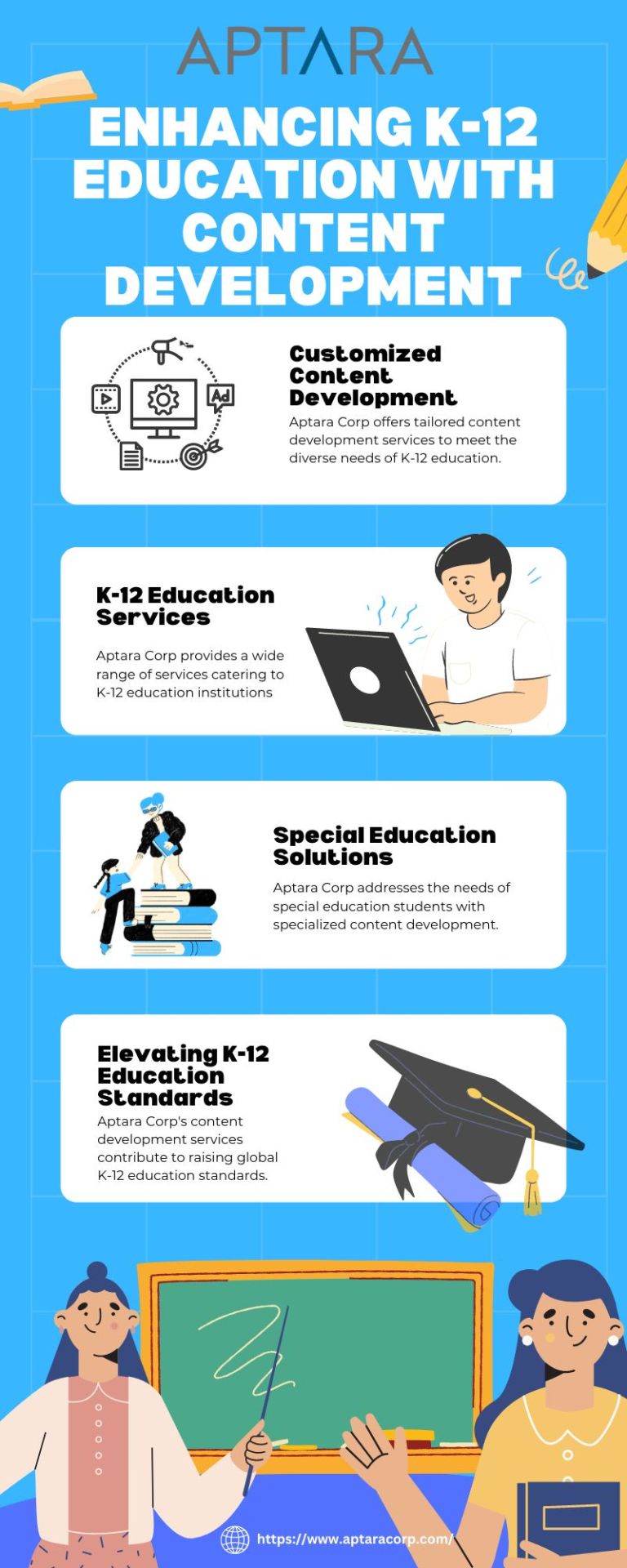#learningtechnologies
Explore tagged Tumblr posts
Text

eLearning translation solutions
Global eLearning translation solution is a comprehensive solution transforming educational content for global audiences. In short, we take care of everything relating to language, from text and multimedia to assessments and user interfaces, to maintain the goal of equal learning by different languages while ensuring effective education and cultural sensitivity within teaching.
0 notes
Text
𝐓𝐡𝐞 𝐅𝐮𝐭𝐮𝐫𝐞 𝐨𝐟 𝐀𝐈-𝐏𝐨𝐰𝐞𝐫𝐞𝐝 𝐏𝐞𝐫𝐬𝐨𝐧𝐚𝐥𝐢𝐳𝐞𝐝 𝐋𝐞𝐚𝐫𝐧𝐢𝐧𝐠!
AI is revolutionizing education! From personalized learning paths to immersive experiences, discover how AI is shaping the future of learning. Is AI the key to accessible education for all? 🤖📚
Watch now! https://youtube.com/shorts/KyorzUAqWmU
#ai#education#edtech#artificialintelligence#personalizedlearning#machinelearning#futureoflearning#techineducation#learningtechnology#aiforeducation
0 notes
Text
Scope Computers
Basic Computer Course – Kickstart Your Digital Journey! 💻🚀 Learn essential computer skills with our beginner-friendly course!
✅ Computer Basics – Hardware, software & OS ✅ Microsoft Office – Word, Excel, PowerPoint ✅ Internet & Email – Safe browsing & communication ✅ Typing & Shortcuts – Improve speed & efficiency
🎯 Perfect for students, job seekers & professionals!
📞 Enroll now & upgrade your digital skills! 🚀

#computercourse#basiccomputing#techeducation#digitalliteracy#learningtechnology#classroomlearning#skilldevelopment#careerpreparation#adulteducation#studentlife#educationadvocate#cartoonillustration#graphicdesign#brandidentity#informationtechnology#digitalskills
0 notes
Text
youtube
AI in Education Enhancing Learning Experiences
#AIinEducation#ArtificialIntelligence#EdTech#AI2024#FutureofEducation#LearningTechnology#AIforLearning#EducationRevolution#SmartEducation#PersonalizedLearning#EducationalTechnology#AIinSchools#EdTech2024#AIEnhancingEducation#InteractiveLearning#AIandEducation#DigitalLearning#AIInnovation#FutureLearning#AITrends2024#AIUpdates#youtube#branding#artwork#accounting#architecture#art#animation#machine learning#artists on tumblr
1 note
·
View note
Text
The Evolution of Virtual Education
Virtual education, once a niche alternative to traditional learning, has transformed into a mainstream mode of education embraced globally. This evolution has been driven by technological advancements, pedagogical innovations, and shifting societal needs. Let's explore the journey of virtual education from its nascent stages to its current state and envision its future trajectory.
The Early Days: Correspondence Courses and Tele-Education
The seeds of virtual education were planted long before the internet era. In the 19th century, correspondence courses allowed students to receive educational materials and submit assignments via mail. These courses provided opportunities for those unable to attend traditional schools due to geographic or personal constraints.
The mid-20th century saw the introduction of tele-education. Educational television programs and radio broadcasts began to supplement traditional learning. For instance, in the 1960s, the Public Broadcasting Service (PBS) in the United States aired educational content that reached millions of households, laying the groundwork for future virtual learning initiatives.
The Internet Revolution: The Birth of Online Learning
The advent of the internet in the late 20th century revolutionized virtual education. Early online courses, offered by institutions like the University of Phoenix in the 1990s, demonstrated the potential of the web as a learning platform. These courses primarily relied on text-based content and email communication, but they opened the door to a new era of accessibility and flexibility in education.
The proliferation of the World Wide Web in the 2000s enabled more sophisticated online learning platforms. The introduction of Learning Management Systems (LMS) like Blackboard and Moodle allowed educators to create structured courses with multimedia content, discussion forums, and assessment tools. This period also saw the rise of online degree programs, making higher education accessible to a broader audience.
The Rise of MOOCs: Democratizing Education
The 2010s marked a significant milestone with the emergence of Massive Open Online Courses (MOOCs). Platforms like Coursera, edX, and Udacity offered free or low-cost courses from prestigious universities to learners worldwide. MOOCs democratized education, breaking down barriers of cost and location.
These platforms leveraged video lectures, interactive quizzes, peer assessments, and community forums to create engaging and scalable learning experiences. MOOCs attracted millions of learners, ranging from high school students to working professionals, and expanded the reach of institutions like Harvard, MIT, and Stanford.
Despite their popularity, MOOCs faced challenges such as low completion rates and the need for credentialing. In response, providers began offering paid certificates, micro-credentials, and pathways to degree programs, blending the strengths of MOOCs with traditional educational structures.
The Impact of COVID-19: Accelerating Virtual Education
The COVID-19 pandemic in 2020 served as a catalyst for the rapid expansion of virtual education. With schools and universities worldwide forced to close their doors, educators and students had to adapt quickly to online learning environments. This global experiment in remote education highlighted both the potential and the limitations of virtual learning.
Schools and universities scrambled to adopt or enhance their LMS, integrate video conferencing tools like Zoom, and develop digital resources to support teaching and learning. While some institutions struggled with the transition, others seized the opportunity to innovate. Teachers experimented with flipped classrooms, asynchronous learning, and hybrid models to maintain educational continuity.
The pandemic also underscored the digital divide, revealing disparities in access to technology and the internet. Addressing these inequities became a priority, prompting initiatives to provide devices and connectivity to underserved communities.
Technological Innovations: Shaping the Future of Virtual Education
As we look to the future, several technological innovations are poised to further transform virtual education:
Artificial Intelligence (AI) and Machine Learning: AI-powered tools can personalize learning experiences by adapting content to individual needs, providing real-time feedback, and automating administrative tasks. Intelligent tutoring systems, like Carnegie Learning, use AI to offer personalized guidance and support to students.
Virtual and Augmented Reality (VR/AR): Immersive technologies like VR and AR can create engaging and interactive learning environments. For example, medical students can practice surgeries in a virtual operating room, and history students can explore ancient civilizations through augmented reality.
Blockchain Technology: Blockchain can enhance the security and verifiability of educational credentials. This technology allows for the creation of digital diplomas and certificates that are tamper-proof and easily shareable.
Gamification: Integrating game elements into learning can boost motivation and engagement. Platforms like Kahoot! and Duolingo use gamification to make learning fun and interactive, encouraging students to achieve their educational goals.
Learning Analytics: Data analytics can provide insights into student performance and learning behaviors. Educators can use this data to identify at-risk students, tailor interventions, and improve instructional strategies.
The Human Element: Balancing Technology and Pedagogy
While technology is a powerful enabler, the human element remains crucial in virtual education. Effective online teaching requires a balance between technological tools and sound pedagogical practices. Educators must design courses that foster interaction, collaboration, and critical thinking.
Building a sense of community in virtual classrooms is essential for student engagement and retention. Strategies such as discussion forums, group projects, and virtual office hours can help create connections between students and instructors. Moreover, professional development for educators is vital to equip them with the skills needed to navigate and leverage digital tools effectively.
Conclusion: The Ongoing Evolution
The evolution of virtual education is a testament to the adaptability and resilience of the educational sector. From correspondence courses to MOOCs, and from the challenges of the COVID-19 pandemic to the promise of emerging technologies, virtual education has continuously evolved to meet the changing needs of learners.
As we move forward, it is essential to focus on inclusivity, accessibility, and quality in virtual education. By harnessing the power of technology while maintaining a student-centered approach, we can create a future where learning is truly global, personalized, and lifelong. The journey of virtual education is far from over, and its potential to transform lives and societies is boundless.
#VirtualEducation#OnlineLearning#EdTech#EducationRevolution#DigitalLearning#MOOCs#RemoteLearning#EdTechInnovation#FutureOfEducation#Elearning#VirtualClassroom#EdTechTrends#LearningTechnology#Education4All#HybridLearning#AIinEducation#EdTechFuture#VirtualLearning#EdReform#InclusiveEducation
1 note
·
View note
Text
"The Impact of VR on Corporate Training and Development"
In the fast-evolving landscape of corporate training, Virtual Reality (VR) has emerged as a transformative tool, revolutionizing the way organizations approach employee development. This immersive technology is not just a futuristic concept but a practical solution that enhances training efficiency, engagement, and overall performance. Immersive Learning Experiences: Virtual Reality brings a new…
View On WordPress
0 notes
Text
📚 Top 10 Home Tuition Innovations in India 🚀
📚 Top 10 Home Tuition Innovations in India – A Deep Dive by Analytics Jobs 🚀
In a world where academic competition is tougher than ever and the traditional classroom model struggles to keep up, home tuition has emerged as a lifeline for students and parents alike.
But here’s the big question – how do we know which home tuition providers are truly innovative and effective?
At Analytics Jobs, we’ve gone beyond the surface to rank the top 10 home tuition innovations in India, based on: ✅ Ease of finding a tutor ✅ Tech-driven learning ✅ Innovation in service delivery ✅ Experience in the tuition space
From AI-enabled performance tracking to real-time progress apps for parents, this blog uncovers how startups like MathsoMania, Qriyo, and Byju’s are reshaping the home learning landscape.
🔍 Check out the full blog here 👉 https://analyticsjobs.in/top-ten-home-tuition-innovations-in-india/
💬 Which of these innovations do you think will shape the future of education in India?
#AnalyticsJobs #EdTech #HomeTuition #EducationInnovation #StartupsInIndia #ParentingTips #LearningTechnology #FutureOfLearning #MathsoMania #Qriyo #Byjus #Cuemath #Vedantu

1 note
·
View note
Text
Online Assessments: Challenges and Opportunities for Traditional Publishers

Explore how traditional publishers can navigate the shift to online assessments. This blog highlights the limitations of traditional methods, industry challenges in embracing digital transformations, and the opportunities for creating interactive, personalized, and data-driven content. It emphasizes the importance of collaboration among educators, publishers, and technologists to design effective, inclusive assessments that enhance learning experiences.
Read more on the MagicBox blog: Online Assessments: Challenges and Opportunities for Traditional Publishers.#OnlineAssessments
#TraditionalPublishers#EdTech#DigitalTransformation#Elearning#InteractiveContent#PersonalizedLearning#EducationInnovation#LearningTechnology
0 notes
Text

#K-20Education #AptaraCorp #EducationServices #LearningSolutions #ContentDevelopment #Elearning #HigherEducation #EdTech #LearningTechnology #EducationalServices #DigitalLearning #LearningResources #OnlineEducation
1 note
·
View note
Text
The Role of Technology in Advancing Education for Disadvantaged Children

In today's rapidly evolving world, technology is not just a luxury but a necessity, and it has the power to revolutionize the way we educate children, especially those from economically disadvantaged backgrounds. Access to quality education for poor children has long been a global concern, and nonprofit organizations, often referred to as NGOs working for education, have been at the forefront of efforts to bridge the educational gap. This article explores how technology plays a pivotal role in advancing education for disadvantaged children, with a focus on the remarkable contributions of NGOs helping poor students.
Empowering through Technology
Education for Poor Children: A Global Challenge Education is a fundamental right, yet millions of children from impoverished backgrounds lack access to quality educational opportunities. These disadvantaged children face multiple barriers, including limited resources, inadequate infrastructure, and geographical isolation. NGOs working for education recognize these challenges and are committed to breaking down these barriers.
The Digital Divide One significant obstacle in the path of education for poor children is the digital divide. Many of these children lack access to computers, the internet, and other educational technologies. The absence of these resources creates a stark imbalance in their educational journey.
NGOs Helping Poor Students: Bridging the Gap
NGOs as Catalysts of Change Nonprofit organizations have a crucial role in addressing educational disparities. These NGOs working for education often specialize in devising innovative solutions to reach underserved communities and disadvantaged children. They leverage technology as a powerful tool for change.
Digital Learning Platforms NGOs helping poor students have been instrumental in creating digital learning platforms that provide free access to educational content. These platforms cover a wide range of subjects and grade levels, ensuring that children from poor backgrounds have access to quality educational resources.
Advantages of Technology-Driven Education
Personalized LearningTechnology allows for personalized learning experiences, catering to the individual needs and pace of each student. This is particularly beneficial for disadvantaged children who may require additional support or face unique learning challenges.
AccessibilityDigital learning materials can be accessed from anywhere, making education more accessible for children in remote or underserved areas. This flexibility ensures that education reaches those who need it the most.
Interactive LearningTechnology facilitates interactive and engaging learning experiences. Educational apps, videos, and games make learning enjoyable and effective, capturing the attention of young learners.
Overcoming Challenges
Internet Connectivity While technology offers immense potential, the lack of reliable internet connectivity remains a significant challenge. NGOs working for education are actively addressing this issue by establishing community Wi-Fi networks and providing offline content.
Device Accessibility Access to devices like smartphones, tablets, or computers is another hurdle for disadvantaged children. NGOs helping poor students often distribute or loan devices to ensure every child has a means of accessing digital resources.
The Future of Education for Poor Children
Preparing for the Digital AgeThe world is becoming increasingly digital, and equipping disadvantaged children with digital literacy skills is vital for their future. Technology-driven education not only imparts knowledge but also prepares these children for the digital age job market.
Impact and Success Stories
Measurable Impact NGOs working for education have witnessed significant improvements in learning outcomes among children who have access to technology-driven educational resources. These improvements include increased engagement, higher test scores, and enhanced critical thinking skills.
Success Stories Numerous success stories highlight the transformative power of technology in education. Children who once lacked access to quality education are now excelling academically, thanks to the efforts of NGOs helping poor students.
Challenges and Considerations
Digital Literacy Introducing technology to disadvantaged children requires a degree of digital literacy among teachers and students. NGOs often provide training to ensure effective utilization of technology.
Sustainability is a key consideration. NGOs working for education must ensure the continued availability of digital resources and support, especially in areas prone to infrastructure challenges.
Conclusion
In the quest for education for poor children, technology has emerged as a formidable ally. NGOs working for education, with their innovative use of technology, are making a remarkable difference in the lives of disadvantaged children worldwide. While challenges such as the digital divide persist, the transformative potential of technology in education cannot be underestimated. As we look to the future, it is imperative that we continue to harness the power of technology to ensure that every child, regardless of their socioeconomic background, has access to a quality education that can unlock a world of opportunities.
0 notes
Photo

Technology-Enhanced Student Development for Real Success. Unlock the potential of technology to empower student development and foster real success. Explore innovative strategies and tools that enhance learning, critical thinking, and creativity.
#StudentDevelopment#TechnologyEnhancedLearning#LeveragingTechnology#InnovativeStrategies#LearningTools#LearningTechnologies#Automation#CollaborationAndTeamwork
0 notes
Text
Looking for a sports-centric learning management system?
With iSportz Learning Management System (LMS), players can engage in classes and interactive lessons that mirror the actual sport they play, catering to the learning and certification needs of the players.
iSportz LMS is a SaaS product, that delivers a powerful e-learning suite for learners to create schedules, participate in training sessions, and manage athletes' performance levels daily.
To transform your sports organization into a more effective team using iSportz Learning Management System (LMS), please visit www.isportz.co
#iSportz #Club #management #sports #sportsmanagement #Saas #sportstech
#sportsindustry #coaching #digitaltransformation #automation #elearning #lms #learningtechnologies
#iSportz#Club#management#sports#sportsmanagement#Saas#sportstech#sportsindustry#coaching#digitaltransformation#automation#elearning#lms#learningtechnologies
0 notes
Text
Campus Learning Management System | AmbiLMS - Best Online LMS
Ambilms is the best online LMS in India. It have a campus learning management system that helps educators to manage their educational coursework online.
Our LMS platform helps students to access their online NCERT course materials easily, including lesson content, assignments, assessment, lectures, multimedia files, multiple-choice questions, quizzes, tests, NCERT solutions, etc.
For more information please visit our website - https://ambilms.com/
Call us - 9717048417

#ambilms#bestlms#campuslearningmanagementsystem#campusrecruiting#campusplacements#campustocorporate#campusrecruitment#campusvirtual#campussecurity#learningmanagementsystems#learninganddevelopment#learningexperience#learningstrategy#learningtechnologies#learningdevelopment#learningsystem#onlinelearning#learninganalytics
0 notes
Video
youtube
Benefits Of A Cloud Based LMS
#LearningManagementSystems have revolutionized the entire e-learning scenario across the globe. With a robust, cloud-based learning system, the reception and delivery of learning become beautifully streamlined and cohesive. Listed below are a few #benefits of a cloud-based LMS!
Visit: https://bit.ly/3fpR6do
0 notes
Link

Did you aware that your FLASH based courses may not work after 2020?
Flash has been serving for long. But now the days are shifting and the phase of flash is coming to an end. By the end of 2020, Adobe will eventually stop support to Flash and all major browsers may not run FLASH content.
Make your training content future proof by converting them into html5. As there are many authoring tools available in the industry for effective HTML5 elearning courses.
Points to note: - Check whether your elearning courses are developed in FLASH - Check whether your source files are available or not - Outsource your conversion to ensure a smoother process - Make sure you upgrade all your browsers of learners after conversion
As it's nearing to the end of 2020, this is the right time to convert your Flash courses to HTML5 before it's too late.
Flash to HTML5 Conversion
#flashtohtml5#responsive#elearningmodules#contentdevelopment#contentconversion#learningdesign#learningtechnology#flashtohtml5conversion#eLearning#html5#2020
15 notes
·
View notes